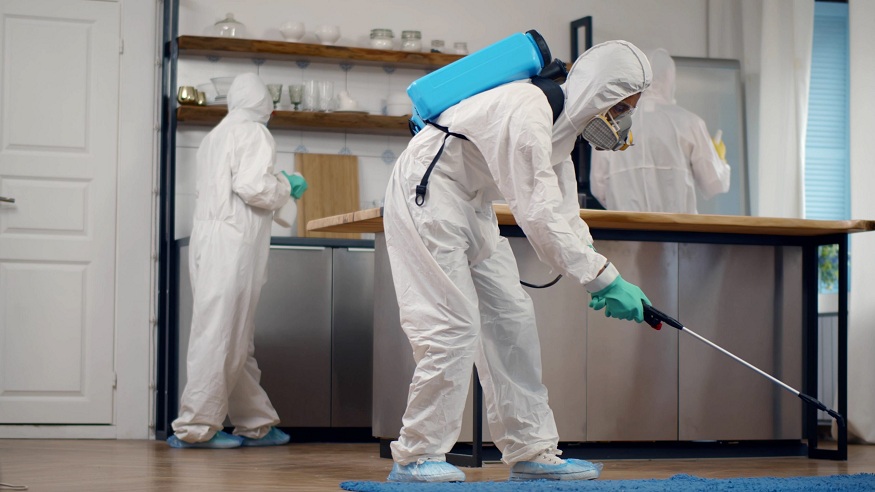Three Most Destructive Pests and How to Tackle Them
Pests can be a homeowner’s worst nightmare, causing damage to property, spreading diseases, and creating unsanitary living conditions. Among the plethora of pests that can invade your home, rats, cockroaches, and ants stand out as particularly destructive.
In this blog, we’ll explore these three pests in detail and discuss effective strategies for tackling them.
Dealing with Rats
Signs of a Rat Infestation
Identifying a rat infestation early is crucial for effective pest control. Common signs of a rat infestation include:
- Droppings: Rat droppings are typically small, dark pellets found near food sources or nesting areas.
- Gnaw Marks: Look for chew marks on wires, pipes, and wooden surfaces.
- Nesting Materials: Rats often use shredded paper, fabric, or plant materials to build nests in secluded areas.
- Scurrying Noises: Rats are nocturnal creatures, so you may hear them moving around at night.
Tackling Rat Infestations
To effectively tackle a rat infestation, consider the following steps:
- Seal Entry Points: Rats can squeeze through small openings, so seal any cracks or gaps in walls, floors, and foundations.
- Remove Food Sources: Store food in airtight containers, clean up spills promptly, and avoid leaving pet food out overnight.
- Set Traps: Place snap traps or humane traps in areas where rats are active, baited with peanut butter or cheese.
- Use Rodenticides: In severe infestations, consider using rodenticides as a last resort, following safety guidelines carefully.
- Consult Professionals: If the infestation persists, seek assistance from pest control professionals who specialize in rat removal by searching for “rats pest control near me.”
By taking proactive measures and addressing rat infestations promptly, you can prevent further damage to your property and safeguard your health.
Dealing with Cockroaches
Signs of a Cockroach Infestation
Spotting signs of a cockroach infestation early can help prevent the population from multiplying. Look out for the following indicators:
- Foul Odor: Cockroaches emit a musty odor that becomes more noticeable as the infestation grows.
- Droppings: Cockroach droppings resemble small, dark specks and may be found in kitchen cabinets, drawers, or behind appliances.
- Egg Casings: Cockroach egg casings, known as oothecae, are often found in hidden crevices and corners.
- Dead Cockroaches: Finding dead cockroaches during the day may indicate a significant infestation.
Controlling Cockroach Infestations
To control a cockroach infestation effectively, consider the following strategies:
- Maintain Cleanliness: Cockroaches are attracted to food crumbs, grease, and moisture, so keep your home clean and dry.
- Seal Entry Points: Prevent cockroaches from entering your home by sealing cracks, gaps, and openings around doors, windows, and pipes.
- Use Baits and Insecticides: Cockroach baits and insecticidal sprays can help reduce the population, but be sure to follow application instructions carefully.
- Declutter and Dispose: Remove clutter from your home, especially in areas where cockroaches are likely to hide, such as under sinks and behind appliances.
- Seek Professional Help: If DIY methods prove ineffective, enlist the help of licensed pest control professionals from agencies of cockroaches pest control in Brisbane who have experience dealing with cockroach infestations.
By implementing comprehensive pest management practices and addressing conducive conditions, you can effectively eliminate cockroaches from your home and prevent future infestations.
Combating Ant Infestations
Signs of an Ant Infestation
Identifying signs of an ant infestation early can help prevent colonies from establishing themselves. Look for the following clues:
- Trails of Ants: Ants often travel in trails between their nest and a food source, which may lead you to their entry point.
- Ant Mounds: Some species of ants build visible mounds outdoors, particularly in garden areas or near the foundation of your home.
- Wood Damage: Carpenter ants tunnel through wood to create nests, leaving behind sawdust-like material known as frass.
- Swarmers: Winged ant swarmers emerging indoors may indicate a mature colony nearby.
Effective Ant Control Strategies
To tackle an ant infestation effectively, consider implementing the following measures:
- Eliminate Food Sources: Keep food stored in sealed containers, clean up spills promptly, and avoid leaving pet food out for extended periods.
- Seal Entry Points: Use caulk or weatherstripping to seal gaps around doors, windows, and utility penetrations to prevent ants from entering your home.
- Trim Vegetation: Keep trees, shrubs, and other vegetation trimmed away from the exterior of your home to reduce ant access points.
- Deploy Baits and Treatments: Ant baits and residual insecticides can be used to control ant populations both indoors and outdoors.
- Address Moisture Issues: Repair leaks and ensure proper drainage to eliminate moisture sources that attract ants.
If ant infestations persist despite your efforts, consider seeking assistance from professional pest control services specializing in ant management by searching for “ants pest control near me.”
Conclusion
Rats, cockroaches, and ants are among the most destructive pests that can invade your home, posing health risks and causing damage to property. By understanding the signs of infestation and implementing effective pest control strategies, you can protect your home and family from these troublesome pests. Whether you’re dealing with a minor nuisance or a full-blown infestation, taking proactive measures and seeking “pest control near me” or “residential and/or commercial pest control near me” when needed can help you regain control of your living space. Don’t let pests take over – tackle them head-on with these helpful tips and strategies.


Leave a Reply
You must be logged in to post a comment.